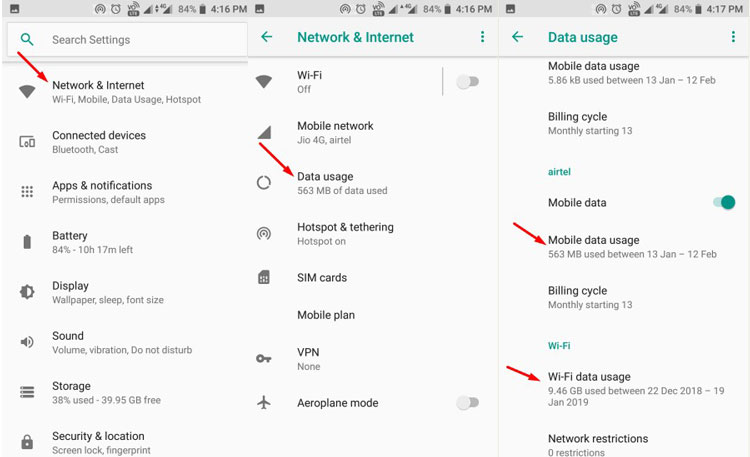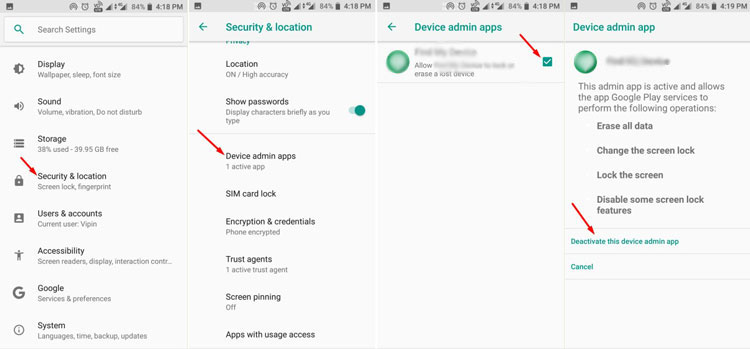
Complete Guide: Eliminate Android Malware Effectively in Just 4 Simple Steps

Complete Guide: Eliminate Android Malware Effectively in Just 4 Simple Steps
Your Android phone contains more sensitive information than your computer. It has your pictures, credit cards, messages, and other valuable data. If malware gets access to this information, it could lead to severe damage. So, it is essential to remove the malware from your phone as soon as you suspect it. But first of all, how do you know that you have a malware infection?

Stay malware-free with reliable antivirus
Don’t compromise your Data and Privacy. TotalAV is a top-notch antivirus program that handles various viruses, trojans, and other malware that may target your devices. It will safeguard your devices and enhance your system performance.
4.9/5
⭐ Editor’s Choice
✔️ Excellent Malware Detection
✔️ Multiple set of Features
✔️ 30 Day Money-Back
Disclaimer: This post includes affiliate links
If you click on a link and make a purchase, I may receive a commission at no extra cost to you.
How to Check your Phone for Viruses
Malware and viruses are designed to do certain jobs. When they enter in your phone, they start taking that action. If you pay little attention, then you can identify an infection easily. Malware like spyware hides in a way that you cannot find them with plain sight. However, an antimalware could detect it and remove it easily. Let’s see some symptoms of malware or virus infection.
- Android is too slow – Malware hides but they have to perform some actions. Thus they use processor and memory. It could make your phone slow. So if you android phone start lagging then it could be a sign of malware infection.
- Apps Crashes – Your apps start crashing often.
- Pop-ups – You see pop-ups and ads banner in the notification area and the keyboard area.
- Unexpected Charges – If you see unexpected charges then it could be due to malware infection. There is some malware that automatically sends SMS to premium numbers or purchase something with your credit card.
- Battery Draining – Malware continuously uses your phone resources. So, the battery starts draining quickly.
- High Data Usage – Malware communicates with their command and control servers so they will use the data. If you see high data usage, it could be a sign of malware infection.
Types of Android Malware
Malware is created to earn revenue. Cybercriminals use several methods to make money. They may not directly steal your money, but they track your data and sell those to earn money. Based on these methods, Android Malware is categorized.
1. Adware
Such malware disguises themselves as a legitimate app that has something to offer. When a user installs them in their phone, they start displaying ads. They could display ads as pop-ups, banner in the notification bar, the upper keyboard area, or in the browser. Some adware also redirects you other pages filled with lots of advertisements. The adware is also able to track your confidential information and act as spyware.
2. Spyware
Spyware is same as the adware, in fact, adware could also be spyware. Such apps pretend to be a good application like a simple game or weather information app. Spyware tracks your sensitive information and sends it back to their makers. They could track your OS version, IMEI, IMSI, phone number, etc. Spyware could also track your browsing history. It could record your key taps and steal information like credit card number and login credentials.
3. Worm & Trojans
Worms and Trojans can expand themselves and spread using the SMS and MMS. They could also use the syncing apps to infect other devices. Such apps start consuming your device resources and make your phone slow or sometimes could crash it. They could bombard SMSes to premium numbers and could increase your bill.
4. Expander
Such apps exploit the feature of WAP billing. Hackers list a fake product on the WAP and such apps automatically purchase that product. You will see the charges in your bill. This way they earn money. Also, such applications could automatically send SMS and calls to the premium numbers that charge you.
5. Phishing Apps
Like Phishing websites, phishing apps disguises itself as a popular app or service. They almost duplicate everything so that user consider them as the original app. When the user enters their login credentials in the app, it steals them. If you enter your credit card information in the app, it also takes them.
How to Prevent Malware on Android
How to Remove Malware from Android Smartphone?
Removing Malware from the Android is easy if you know about the guilty app. If you know which app contains the malware you can uninstall it. However, if you are unsure which app is causing the trouble, then you can follow the below steps-
Clearing the Browser Cache: Your First Line of Defense
Imagine your web browser as the front door to your fascinating, yet overwhelming, internet world. However, just like your front door can sometimes invite unwanted guests, your browser can also be a gateway for malicious objects. This is where your cache, much like a doormat, comes in. It collects all the potential threats that aim to infiltrate your device. Clearing your cache is like shaking out this doormat, ensuring your device remains clean and secure. Here are the simple steps:
- Navigate to the Settings on your device.
- Tap on Apps and notifications.
- Select the browser you use, for instance, Chrome.
- Go to the Storage & cache menu, tap on Clear Cache.
Congratulations! Your browser is now free of potentially harmful temporary files.
Safe Mode: The Cyber Security Equivalent of a Time Out
Don’t you sometimes wish you could pause the world and deal with one issue at a time? Safe mode provides that luxury. It’s a protective bubble where your operating system can function without interference from malicious apps. If your device is acting up – restarting on its own, freezing, or simply being slow, safe mode is your go-to solution.
To enter Safe mode, keep pressing the ‘Power Button’ until the prompt to start in safe mode appears.
In case, you’ve configured Power button long press to open Voice assistant, pull down notification bar and tap the power button. Long tap the Power Off button
Securing Your Google Account: A Password is Worth a Thousand Locks
Just as you’d change the locks after a break-in, it’s crucial to change your Google password if you suspect a malware intrusion. To strengthen your security further, enable two-factor authentication (2FA). This is akin to adding a deadbolt to your already sturdy front door, ensuring added safety.
Identifying and Removing Suspicious Apps: The Digital Declutter
Malware often disguises itself as an app on your device. Identifying and removing these sneaky culprits is like decluttering your digital space, enhancing your device’s functionality. Be wary of apps you don’t recall downloading or those that request unnecessary permissions.
Install Android Antivirus: Your Digital Bodyguard
Manually removing threats may be a time-consuming and difficult task that needs expert-level computer knowledge. So, we recommend professional antivirus program like TotalAV which can detect and remove all traces of virus infection. It can finish the task for you in just one click.
How to know which App has Malware?
1. If you have recently installed an app and after that, you start seeing the malware symptoms, then you know the culprit.
2. If you see the ads in the notification bar, then you can long tap on it and then touch on All Categories to know which app is displaying the advertisement.
3. Check your battery consumption details. If you see any app that you did not use but still consumed battery, then it is malware. To check battery usage, go to Settings > Battery and monitor the usage. If you recently charged your device, you will see Battery usage data isn’t available. Wait for 1-2 hrs once the data becomes available.

4. Check the data usage. If you see any app that is using data without any need, then it is the guilty one. To check data usage go to Settings > Network & Internet > Data usage > Mobile data usage / Wi-Fi data usage.

If you find the app that has malware, then follow the next step to remove it. But if you don’t see it then take help of malware removal tool.
How to Remove the Malware App?
Now you know the culprit app, all you have to do is uninstall it. To remove this app go to Settings and tap on Apps & Notifications. Now locate the app that you want to delete. Tap on it, and choose Uninstall.

If you see the Uninstall option is greyed out or it is not there, then it means that the app has admin rights. Some apps that have malware get the admin rights to exploit the resources. They also do it so that users cannot remove them easily. However, it doesn’t mean that you cannot remove it.
To remove the admin rights. Go to Settings > Security & location > Device admin apps. Now tap on the checkbox and then tap on Deactivate this device admin app. Again go to the Apps & notifications to remove it.

Restart your phone and check if the symptoms still appearing. If it is still there, then take help of malware removal tool.
Remove Malware with MalwareFox Antimalware
If you followed the above steps and your problem is not solved then take help of MalwareFox. It will also help you if you don’t know which app has the malware. It automatically detects malware and removes them.
Download MalwareFox Antimalware .
Tap on the MalwareFox Menu button. Then tap on Settings. Enable these options as shown in the image. Anti-Keylogger and Real-Time Protection are the premium features. If you want those features, then visit MalwareFox website and purchase the license for Android.

Now go Back and tap of Full Scan.

It will scan and remove malware from your device.
2 thoughts on “How to Remove Malware from Android”
Androidena
October 3, 2020 at 9:33 pm
With over 100 million installs, Avast Mobile Security for Android is the leading free mobile antivirus tool. Stay protected from threats online with comprehensive, adaptive security that detects and blocks malware before it has a chance to infect your device. World-class mobile security, absolutely free.
Reply
Melissa Sibanda
January 2, 2024 at 1:47 pm
Thank you so much was super helpful. Very smart
Reply
Leave a Comment Cancel reply
Comment
Name Email
Save my name, email, and website in this browser for the next time I comment.
Δ
Also read:
- [New] Beyond the Mic Advanced Strategies for Professional Voice-Over Work
- [Updated] SRT Unveiled Core Concepts and Practical Info for 2024
- [Updated] Unlocking 11 Pro's Window Secrets for 2024
- 5 Best Practices for Extending the Life of Your Nintendo Switch
- Comment Recouvrer Vos Fichiers Téléchargés Sur Windows 11 : Guide Complet en 5 Étapes Facilement Suivies
- Easy Guide to Changing Your Videos To/From MP4 on a Mac with Top-Ranking Media Converter Apps
- Effiziente Methoden Zum Hochladen Von MP3-Tracks Auf Ihr iPad, Ohne Die Verwendung Von iTunes
- How to Remove iPhone 15 Pro Max Face ID?
- iCloud Unlocker Download Unlock iCloud Lock for your iPhone 6
- Mastering the Art of ASUS System Restoration Using Your Precious Recovery Key
- Newly Updated List of Default Login Details for D-Link Routers (July '24)
- Quick Fixes for iTunes Error Code 3194: Top Strategies for Windows Users
- SSDでRAWデータ形式の画像を確実に表示するための改良手順指南
- Windows 11 Continuous Reboot Post-Update? Here Are 5 Effective Solutions!
- ゴミ箱抹消後にWindows 10でデータ蘇生のためのテクニック
- Title: Complete Guide: Eliminate Android Malware Effectively in Just 4 Simple Steps
- Author: John
- Created at : 2024-10-16 05:00:48
- Updated at : 2024-10-20 03:33:37
- Link: https://win-docs.techidaily.com/complete-guide-eliminate-android-malware-effectively-in-just-4-simple-steps/
- License: This work is licensed under CC BY-NC-SA 4.0.
